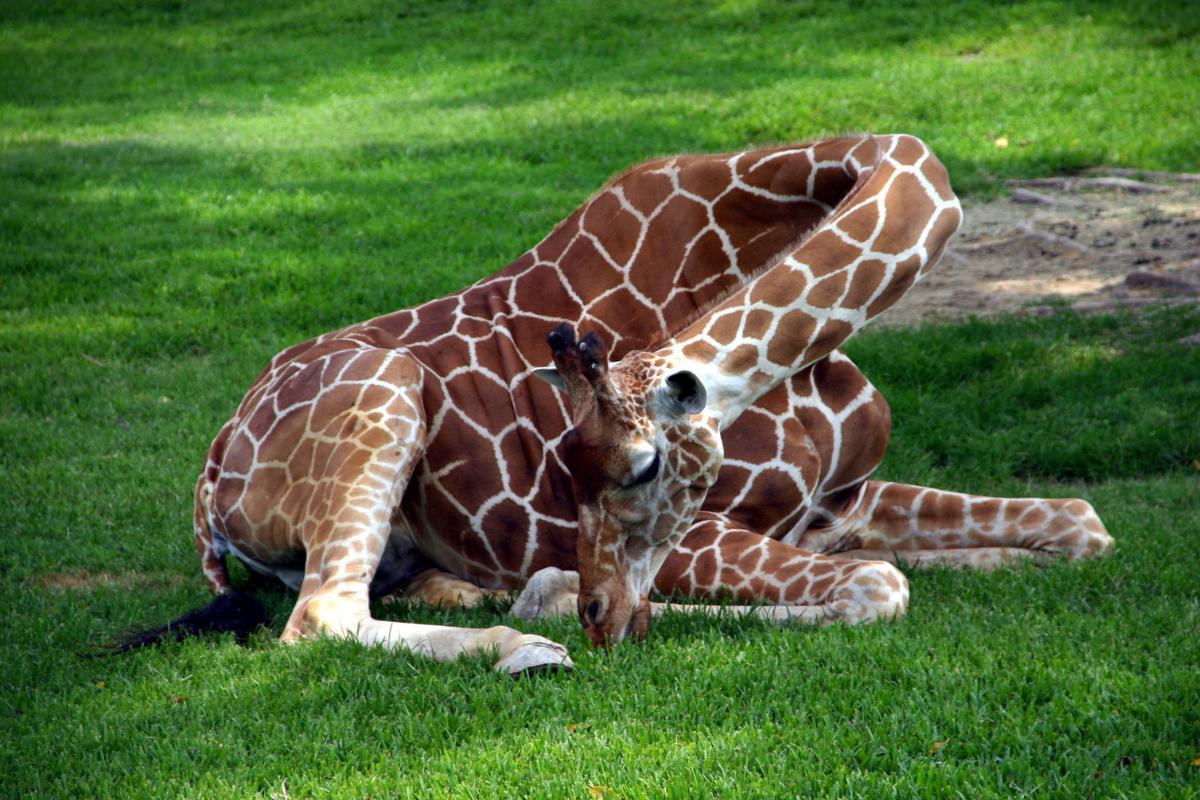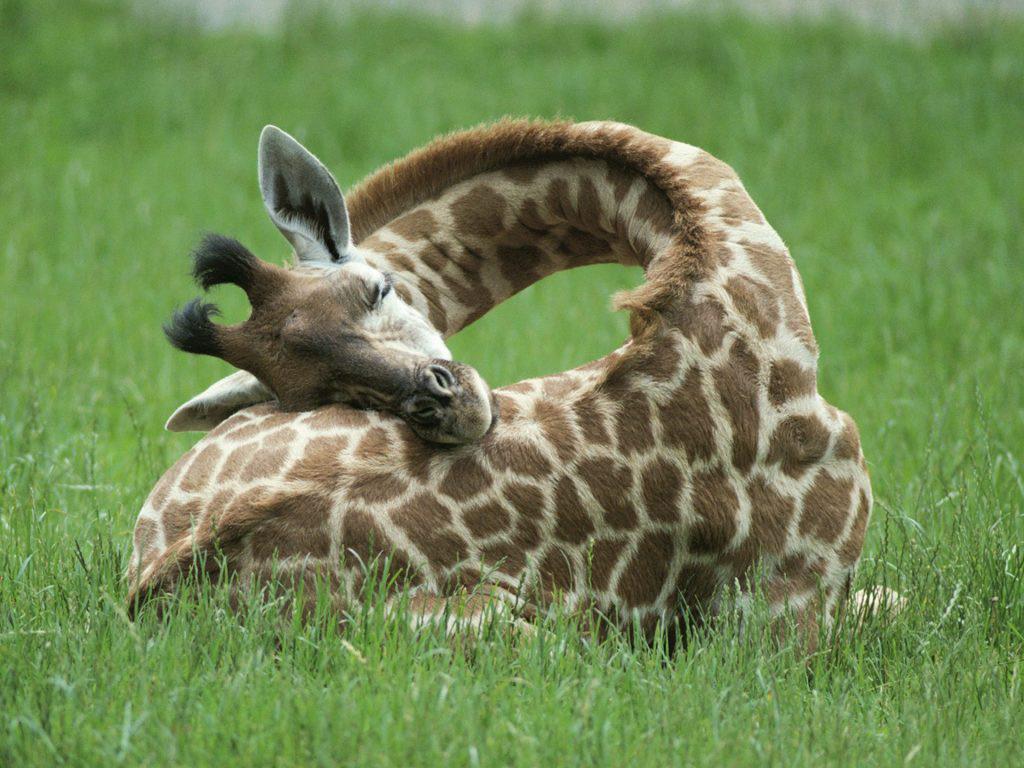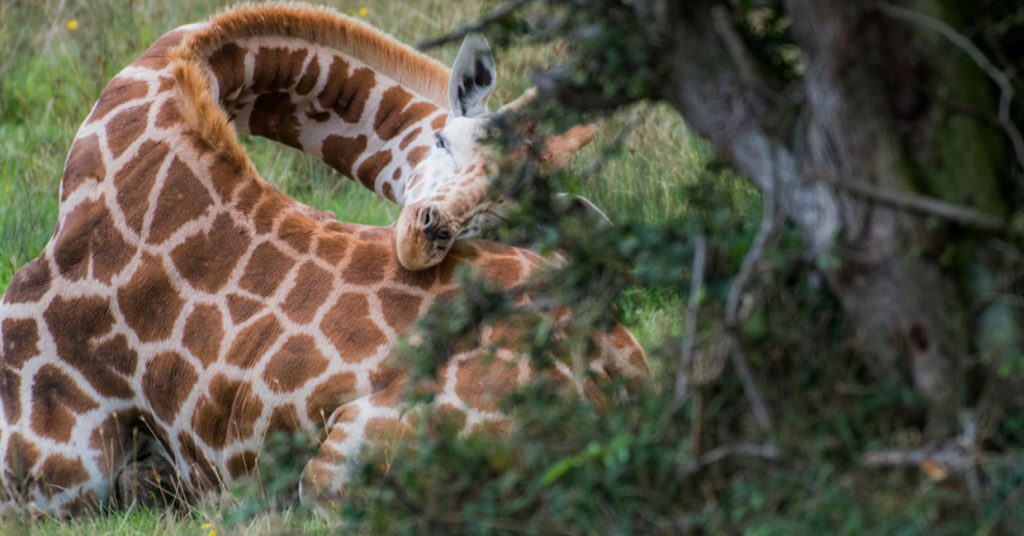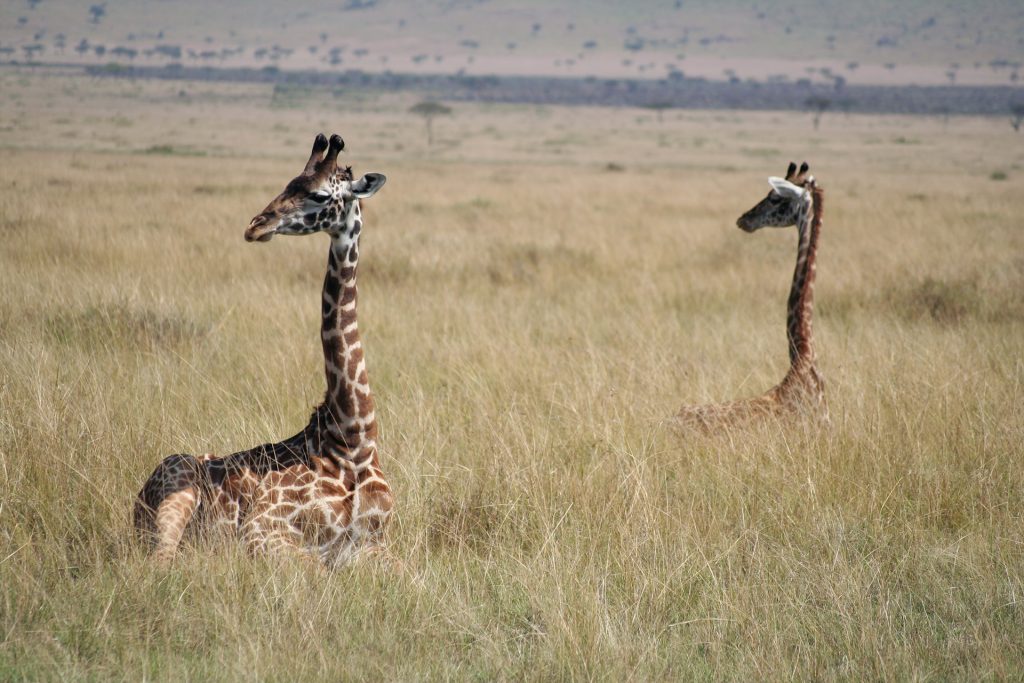
If you have ever stood near a giraffe, even at a distance, you know how surreal they look like a mix of elegance and awkwardness, with legs that seem too long for the rest of their body and a neck that seems to stretch into another world. Now picture this: an animal that tall has to sleep. But how?
It’s a fair question. You might imagine they’d lie down like horses or curl up like cats. In reality, giraffes have developed one of the most unusual sleeping patterns in the animal kingdom. It’s shaped entirely by survival, by the landscape they live in, and by the predators that watch them from the shadows.
When you learn how giraffes sleep, you start to see them differently. They aren’t simply tall, gentle browsers feeding on acacia leaves. They’re creatures that have adapted every part of their lives even rest to the demands of the African wild.
Giraffes sleep for very short periods compared to humans. On average, they get only about 30 minutes to 2 hours of sleep in an entire day. That’s not one long stretch like us, but instead a handful of short naps scattered across day and night.
Why so little? It’s all about survival. Giraffes live in open savannas where lions, leopards, and hyenas are never too far away. Long, deep sleep could leave them vulnerable. Their sleeping strategy is like having one eye open at all times.
Most of their naps happen at night. During the day, they spend the bulk of their time feeding giraffes can eat for 16 to 20 hours in a day. Still, it’s not unusual to see a giraffe in a light doze during daylight if the area feels safe enough.
One of the most fascinating things about giraffes is that they can sleep while standing. You’ve probably seen horses do this, but for giraffes, it’s even more important because of the time it takes them to get up from lying down.
When they sleep standing, they keep their legs locked in place and let their necks droop slightly forward or to the side. Their eyes close, breathing slows, and for a few minutes, they drift. These standing naps are short — often just a couple of minutes — but they can take several of them through the night.
The advantage? If danger comes, they’re already upright and can run almost immediately. When you’re 18 feet tall, that’s a life-saving feature.
While it’s less common, giraffes do sometimes sleep lying down. This is usually when they feel completely safe, perhaps in the center of a herd or in an area with good visibility and low predator presence.
To lie down, a giraffe folds its legs under its body, much like a camel. Then, it might do something remarkable — it bends its neck around and rests its head on its hip or even along its back. This tucked position allows for deeper, more restorative sleep.
But here’s the catch: they rarely stay like this for more than a few minutes. Getting up from a lying position is slow for such a tall animal. They have to rock forward, unfold their front legs, push themselves upright, and then straighten their back legs. That process could take precious seconds in the face of danger.



Safety dictates everything about a giraffe’s sleep. Out in the wild, it’s not unusual for one giraffe to stay awake while others nap. This “lookout” behavior is a form of protection — if anything stirs in the bush, the watcher sounds the alarm by moving quickly or even bolting, which cues the others to wake up.
Younger giraffes, or calves, actually sleep more than adults. They might spend more time lying down and in deeper rest, but they do so with their mothers or other adults standing nearby. I’ve seen this on safari: a calf curled on the grass, eyes shut, while its mother stands guard, scanning the horizon for movement.
It might seem impossible that an animal can survive on such little sleep, but giraffes are built for it. Their brains can get enough rest from short, fragmented naps. Many of these naps are only a few minutes long but add up over a day.
Part of this is evolutionary. In the wild, sleeping deeply for hours would have been a quick ticket to being caught by predators. Over time, giraffes simply adapted to survive on less.
Even in captivity, where there are no threats, giraffes still tend to sleep in short bursts. This shows that it’s not just environmental — it’s hardwired into their biology.
If you go on safari early in the morning, you might find giraffes in a half-sleep state, eyes half closed, jaws still moving as they chew cud from the previous night’s feeding. Sometimes you’ll see them standing perfectly still, their heads slowly tilting forward — that’s a standing nap.
On rare occasions, you might spot one lying down with its neck twisted, resting its head on its flank. It’s an oddly endearing sight, given their size. Guides often point these moments out, because lying-down sleep-in giraffes is special to witness.
I remember one morning in the Maasai Mara when our guide stopped the vehicle and whispered, “Look at that.” In a clearing ahead, a young male giraffe lay folded on the ground, neck bent in an elegant curve, completely still. Around him, older giraffes stood like tall sentinels. It was quiet, except for the soft rustle of grass. In that moment, it felt like we’d stumbled into a hidden side of their lives.
Do giraffes dream? The answer is not entirely clear. Many animals, including mammals, show rapid eye movement (REM) sleep, which is linked to dreaming in humans. Giraffes do have short bouts of REM sleep, but they last only a few minutes. If they do dream, it’s in very brief flashes — perhaps images of leaves, movement in the trees, or the scent of nearby animals.
Calves: Need more rest, often lying down for longer stretches with adult supervision.
Adults in the wild: Sleep less, mostly standing, with quick bursts of deep sleep when lying down.
Captive giraffes: Sleep patterns are similar, though they may lie down more often due to safety.
Old or sick giraffes: May rest more often, but still remain cautious.
For many first-time safari travelers, seeing a giraffe sleep is a surprise. Most people picture them always alert and browsing trees. But witnessing their quiet, still moments gives you a deeper connection to the animal. It shows that even the tallest, most seemingly unshakable creatures have vulnerable times.
If you’re lucky enough to see it, it’s a reminder of how every animal — no matter how big or small — has to balance rest with the need to survive.
Giraffes sleep very differently from human beings. They rest in short, scattered naps, sometimes standing, sometimes lying down with their heads tucked in ways that seem impossible for such long necks. Their unique sleeping habits are a survival adaptation, shaped by the constant watch for predators and the demands of life on the savanna.
If you ever see one dozing in the wild, take a moment to appreciate it. You’re watching a rare, intimate slice of their life — one that most visitors miss. And once you’ve seen it, you’ll never look at these gentle giants in quite the same way again.

Lorem ipsum dolor sit amet, consectetur adipiscing elit. Ut elit tellus, luctus nec ullamcorper mattis, pulvinar dapibus leo.
GET A QUOTE
Get SEO metrics of any website or URL.

Explore Tanzania, Kenya, and Uganda in unmatched luxury.
Witness the Great Migration from exclusive viewpoints, relax in handpicked lodges, and savor gourmet dining under African skies.
From the Serengeti’s plains to Uganda’s gorilla highlands, every moment is curated for comfort and wonder.
Group Safaris
How we Work
Our Journeys
Flying Safaris
Conservation & Community
Contact Us
Honey Moon Safaris
Balloon Safaris
Family Safaris
Serengeti
Ngorongoro Crater
Maasai Mara
Bwindi Impenetrable
Volcanoes
Tarangire
Lake Nakuru
Kibale Forest
Lake Manyara
Arusha NP
Nairobi NP
About Friendly Safaris
How we Work
Our Journeys
The Team
Conservation & Community
Contact Us
Payment Details
Terms & Condition
FAQs
DMC
Start Planning